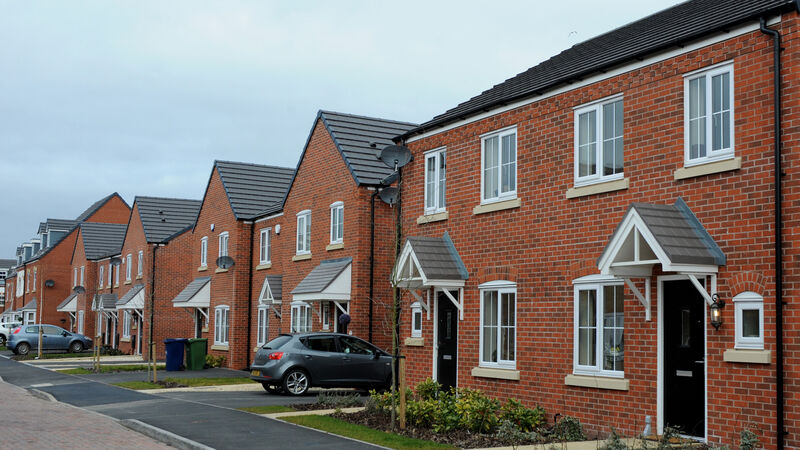Vast majority of new homes meet highest energy standards

According to data from the Central Statistics Office, 98% of homes built between 2015 and 2021 were given an A rating on the Building Energy Rating (BER) scale, compared with just 34% in 2010 to 2014 and a mere 1% in 2005 to 2009. File picture
Nearly every home built in Ireland over the past six years has been given the most energy efficient rating, almost completely flipping the picture from those built during the noughties.
According to data from the Central Statistics Office (CSO), 98% of homes built between 2015 and 2021 were given an A rating on the Building Energy Rating (BER) scale, compared with just 34% in 2010 to 2014 and a mere 1% in 2005 to 2009.
A building owner must obtain a BER certificate from a certified checker before a new building is occupied for the first time, in what is described as an audit. BER ratings were first introduced as a compulsory measure 13 years ago.
There are three types – one for a new build not yet completed but based off plans, one for the final build, and another for existing homes.
In the period from 2009 to December 2021, just over 1.1m BER audits have been undertaken, according to the CSO. There was an 8% increase in domestic BER audits in 2021, compared to the previous year, the data show.
However, there was a considerable geographical discrepancy between areas with high BER ratings compared to less energy efficient homes.
8% increase in Domestic BER audits in 2021https://t.co/dWZr3JrI73 #CSOIreland #Ireland #Environment #Buildings #EnergyRatings #Energy #EnvironmentalSubsidies #EnvironmentalAccounts #NetworkedGas #GasConsumption #Climate pic.twitter.com/7dGxyvhLxP
— Central Statistics Office Ireland (@CSOIreland) January 17, 2022
The CSO said Dublin county had the highest combined A and B rating at 32%, whereas at the other end of the scale, Leitrim had the lowest proportion of combined A and B rating at just 11%.
Dublin 18, which includes Cabinteely, Carrickmines, and Foxrock, had the highest proportion of combined A and B ratings at 46%, while the highest proportion of combined F and G ratings was 25% for Dublin 7, which includes Arbour Hill.
Using electricity for heating was key to homes being granted higher efficiency ratings, according to the data.
"Electricity was the main space heating fuel used in 56% of the dwellings completed during 2015-2021 and with a BER audit. This was an increase from 2000-2004, when 19% of dwellings with a BER audit used electricity.
"There was a contrasting trend for heating oil with 35% of 2000-2004 built dwellings using heating oil compared with 3% for dwellings built in 2015-2021," the CSO said.
A BER rating is calculated based on a number of factors in a home, including wall, roof and floor dimensions, as well as window and door size.
Construction type and insulation, ventilation, heat systems, and the type of lighting also factor into the rating.
According to the Sustainable Energy Authority of Ireland, having a B2 rating or higher not only allows savings on energy bills, but increases the value of a property.





